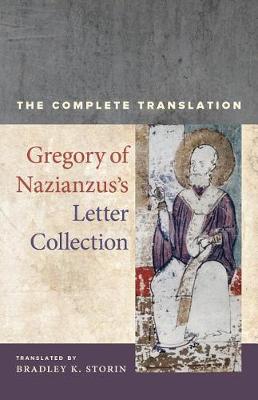Christianity in Late Antiquity
2 primary works
Book 6
A seminal figure in late antique Christianity and Christian orthodoxy, Saint Gregory of Nazianzus published a collection of more than 240 letters. Whereas these letters have often been cast aside as readers turn to his theological orations or autobiographical poetry for insight into his life, thought, and times, Self-Portrait in Three Colors focuses squarely on them, building a provocative case that the finalized collection constitutes not an epistolary archive but an autobiography in epistolary form-a single text composed to secure his status among provincial contemporaries and later generations. Shedding light on late-ancient letter writing, fourth-century Christian intelligentsia, Christianity and classical culture, and the Christianization of Roman society, these letters offer a fascinating and unique view of Gregory's life, engagement with literary culture, and leadership in the church. As a single unit, this autobiographical epistolary collection proved a powerful tool in Gregory's attempts to govern the contours of his authorial image as well as his provincial and ecclesiastical legacy.
Book 7
Gregory of Nazianzus's Letter Collection
by Gregory of Nazianzus and Bradley K Storin
Published 17 December 2019
Saint Gregory of Nazianzus, also known as Gregory the Theologian, lived an illustrious life as an orator, poet, priest, and bishop. Until his death, he wrote scores of letters to friends and colleagues, clergy members and philosophers, teachers of rhetoric and literature, and high-ranking officials at the provincial and imperial levels, many of which are preserved in his self-designed letter collection. Here, for the first time in English, Bradley K. Storin has translated the complete collection, offering readers a fresh view on Gregory's life, social and cultural engagement, leadership in the church, and literary talents. Accompanying the translation are an introduction, a prosopography, and annotations that situate Gregory's letters in their biographical, literary, and historical contexts. This translation is an essential resource for scholars and students of late antiquity and early Christianity.

